Friday, December 6, 2024. Annette’s News Roundup.
Why New York is still a great city.

The tree was lit up in Rockefeller Center on Wednesday, Dec. 4, 2024.
Looking to make holiday and/or year-end gifts? Fight Trump? Fight for Democracy?
Some suggestions. As you know, there is no charge for the Roundup. If you make a donation to one of these charities, I would consider it a thank you.
THE ACLU
The ACLU is a nonprofit that assists in legal cases where civil rights are involved, including abortion care, trans people's right to live freely, and people's right to vote. It also hosts the Drag Defense Fund, which legally defends drag performers' freedom of speech and self-expression.
https://action.aclu.org/give/support-drag-defense-fund


Climate Science Legal Defense Fund
This group fights for the rights of scientists to conduct, publish, and discuss their research and advocate for science without the threat of political harassment, censorship, or legal intimidation.
Climate Science Defense Fund
https://www.csldf.org/resources/political-action-toolkit/
Click to read CSLDF Impact Report 2024.](https://www.csldf.org/wp-content/uploads/2024/10/CSLDF-ImpactReport2024_digital.pdf)
Young Center for Immigrant Children's Rights
Maria Woltjen (now retired)was the Founder of the Young Center for Immigrant Children’s Rights. Young Center for Immigrant Children's Rights is an organization focused on protecting the children of immigrants, fighting against deportation and family separation, n according to the Convention on the Rights of the Child and state and federal law.
National Women’s Law Center
The National Women’s Law Center uses all of the tools at its disposal to push gender justice forward. Its efforts span from fighting in the halls of Congress and state governments, to working in the margins of legislation drafts and legal briefs, to telling the stories of those it serves through compelling data analysis and research, as well as nationwide culture campaigns.
National Women’s Law Center



The Southern Poverty Law Center.
The SPLC is a catalyst for racial justice in the South and beyond, working in partnership with communities to dismantle white supremacy, strengthen intersectional movements, and advance the human rights of all people.
SPLC


Momma Rose’s Many Faces, From Ethel Merman to Audra McDonald.
In her various incarnations, the “Gypsy” character is always loud, always scary, but so different. Ben Brantley reflects on all the onstage Roses he has known.

To those who worship at the church of the American musical, it was a holy night. For on a Thursday in late November in the city of New York, the faithful had assembled to witness what might be described as the Sixth Coming.
Momma Rose was being reborn once again.
The occasion was the first preview of the fifth Broadway revival of “Gypsy,” directed by George C. Wolfe at the newly restored Majestic Theater, which had last been the home of the longest-running musical on Broadway, “The Phantom of the Opera.” Rose was being played — deep breath, please — by the record-breaking, six-time Tony Award winner Audra McDonald. The house was packed, the crowd aflutter, and expectations stratospheric.
For the uninitiated, let me explain that Momma Rose — as she is somehow commonly known, though she is never called that in the show — is widely perceived by theater cognoscenti as the greatest character ever to inhabit a musical comedy. First portrayed by Ethel Merman, she is to that genre’s actresses what Hamlet and Lear are to Shakespearean actors, a sky-scraping, Himalayan peak. As Arthur Laurents, who wrote the show’s book, described her, she is “a larger-than-life mother, a mythic mesmerizing mother, a monster of a mother sweetly named Rose.”
The title character of this 1959 musical is in fact the stripper deluxe Gypsy Rose Lee. But it’s her mother, Rose, who is the show’s very (very) dominating central figure, a human bulldozer who drags her two young daughters through the shabby vaudeville circuit of the Great Depression in the hope of making one of them a star. Written by the sacred trinity of Laurents, Jule Styne (music) and Stephen Sondheim (lyrics), “Gypsy” is regarded by many (including me) as the great book musical and the most probing musical about performing itself. For all its surface brightness and buoyancy, “Gypsy” thrums darkly with the ravenous hunger for attention that lies in the deepest heart of showbiz.
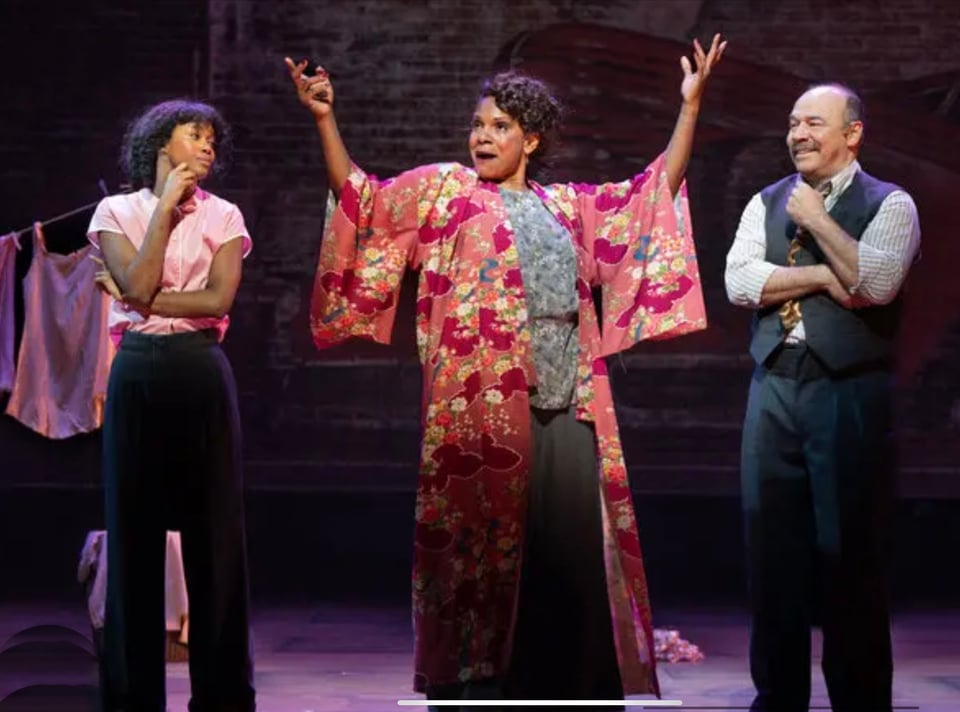
McDonald with Joy Woods and Danny Burstein in the new production, directed by George C. Wolfe, credit. Sara Krulwich/The New York Times
Thus when Styne’s brassy overture began for that first preview last month, the crowd roared like seals in a zoo at feeding time. Then the noise morphed into the kind of frenzied sound heard at religious revivals and Taylor Swift concerts. Cast members were onstage by then, enacting the auditions for a children’s talent show.
But all eyes were fixed on the aisle where McDonald, clutching a small dog, was striding forcefully toward the proscenium. The audience was so loud it was hard to make out what she was saying. But, of course, we all knew. It was “Sing out, Louise!,” directed at a hapless little girl in boy’s clothing. And suddenly I was remembering the many, always thrilling times I had heard those words before.
Such recollections have inspired me to assemble an annotated list, in chronological order, of all the onstage Roses I have known. (I have omitted screen interpretations, including the misfired Rosalind Russell movie version. And, oh — envy me — I will not describe Barbra Streisand’s showing me the “sizzle reel” she had prepared for a hoped-for film in which she would play Rose.) The only one I didn’t see in person was Merman. But hearing her sing with such ear-shattering, out-of-my-way power on the cast album (God bless my mother for buying it) has made me feel I did.
1959
Ethel Merman
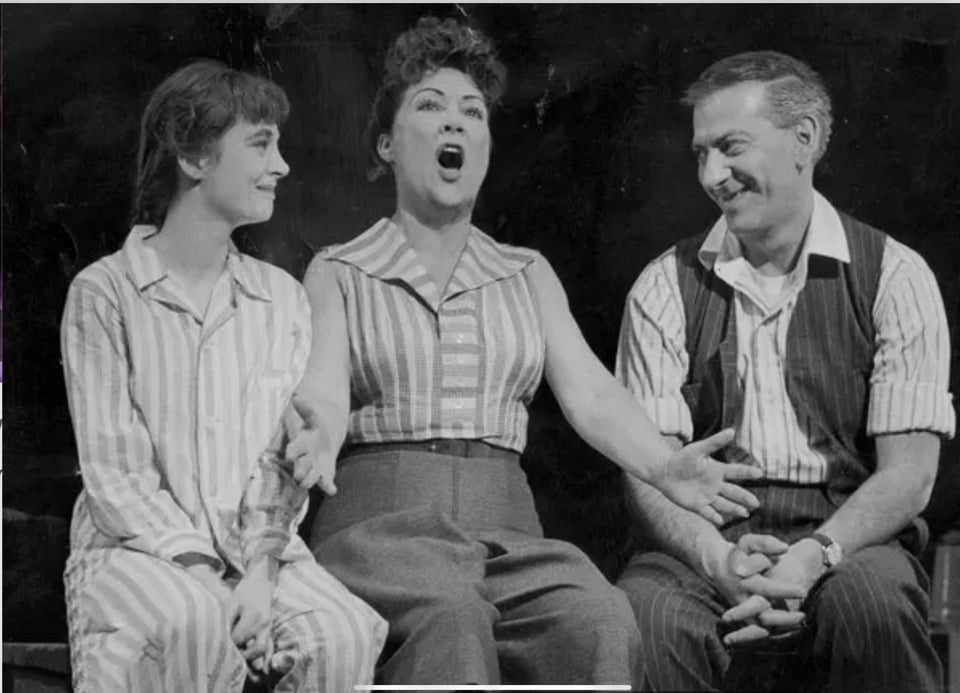
From left, Sandra Church, Ethel Merman and Jack Klugman in the original production, directed by Jerome Robbins.Credit...New York Public Library for the Performing Arts
The part of Rose was written for and custom-fitted on Merman, then the big-belting queen of musical comedy (“Anything Goes,” “Annie Get Your Gun”), and she was directed with uncharacteristic respect by Jerome Robbins. As a stage presence, Merman was a monolith, unhindered by psychological nuance. (Sondheim once referred to her as a “talking dog.”) But this unselfconscious, unwavering strength and fixedness made her ideal as a forward-moving shark of a woman for whom introspection was anathema. When Merman’s Rose finally falls apart — in the 11 o’clock nervous breakdown of a solo “Rose’s Turn” — it is doubly harrowing. As an older friend of mine who saw Merman described it, “That she didn’t, couldn’t understand what was happening to her was what made it so amazing.” That performance is still regarded by many as definitive, and whoever dared to follow her had to be brave indeed.
1974
Angela Lansbury
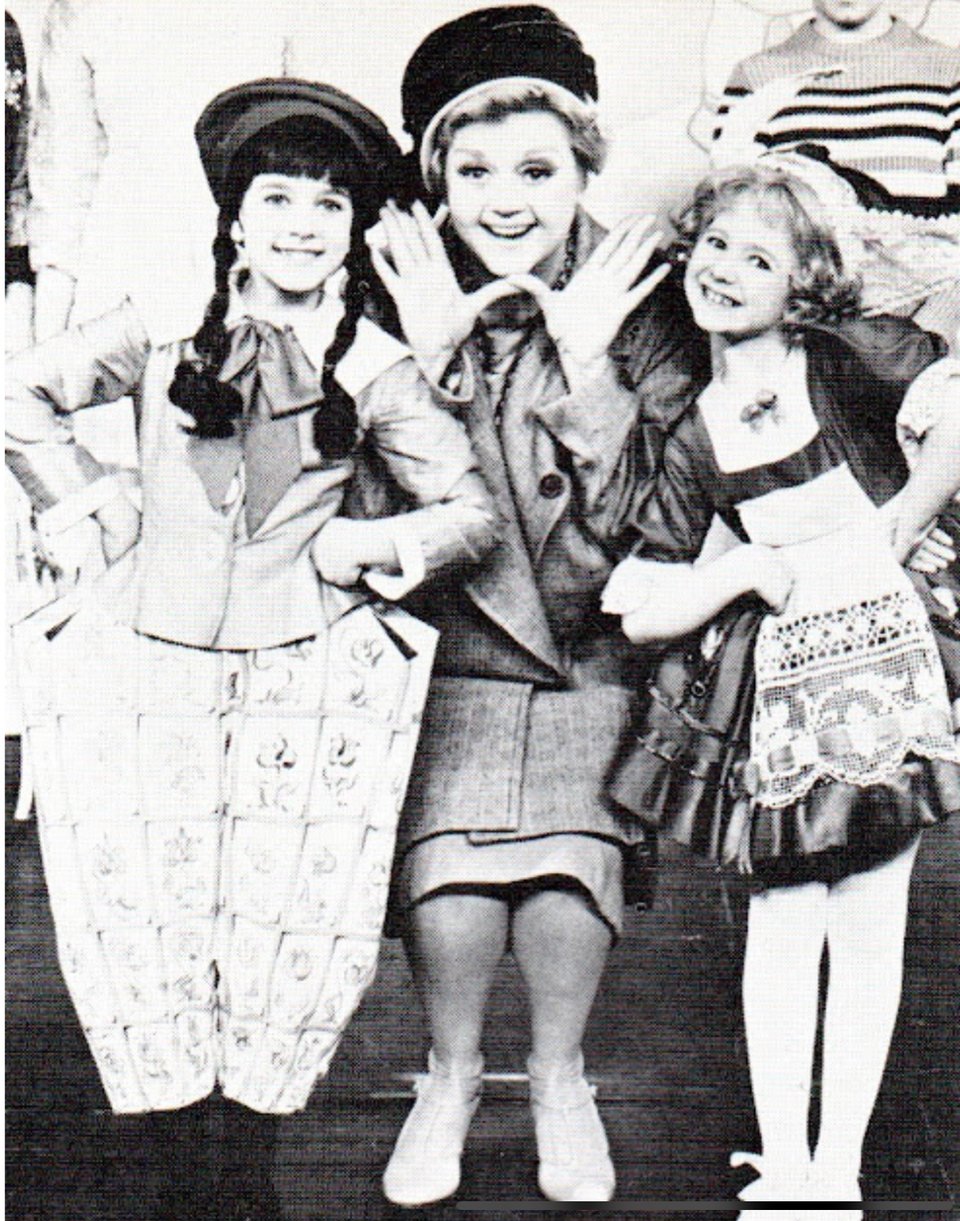
Angela Lansbury with Lisa Peluso (center) and Bonnie Langford in the show’s first Broadway revival.Credit...Martha Swope/New York Public Library for the Performing Arts
“Lightning never strikes twice! Right? Wrong!” Thus began Clive Barnes’s review of the first post-Merman “Gypsy” on Broadway, staged by Laurents. Lansbury had “shattered the town,” Barnes wrote, just as Merman had, but in an altogether different way. After reading that review in the library at Swarthmore College, where I was a sophomore, I hied myself to New York and scored cancellation tickets. (And yes, I cried when Lansbury appeared in the aisle.) She probably understood the language of vaudeville better than any Rose, and she struck clear-cut, music-hall-style poses that she proceeded to fill in with rippling shadows. Her Rose had a sharp alacrity, a smiling confidence pocked with suggestions of a restless narcissism. You never forget your first. I can recall the chills I felt when Lansbury suddenly turned feral with the lyrics “Momma is gonna see to it!” in the peppy first-act finale “Everything’s Coming Up Roses,” or when in a hypnotized state of self-delusion, she kept bowing to a silent audience after “Rose’s Turn.”
1989
Tyne Daly
“Savage, sexy, funny, common as dirt, and absolutely wonderful,” Laurents, who also directed this version, wrote of his latest Rose. Best known as an amiable star of the buddy cop TV show “Cagney & Lacey,” Daly floored audiences with her uncompromising ferocity here. This was a woman who understood just how lowdown the world of on-the-road vaudeville and burlesque was, and how hard you had to be to survive it. Hers was a boldly unsentimentalized Rose, who never once played for sympathy, and the erotic anger of her “Rose’s Turn” was a shocker. I could get only mezzanine seats for this one, but Daly’s nuclear heat blasted through the distance between me and the stage.
1998
Betty Buckley
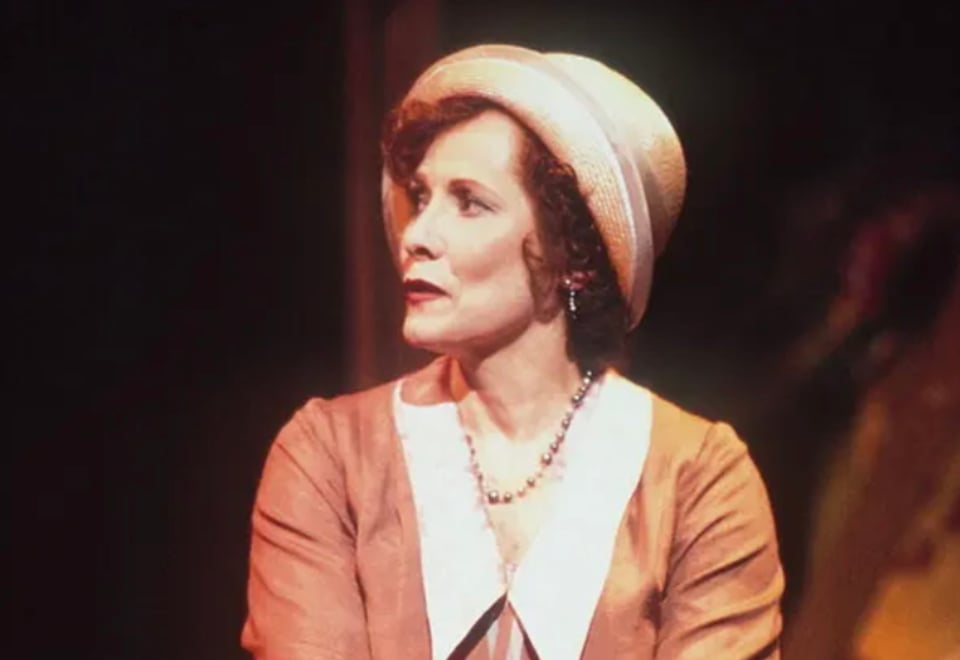
Betty Buckley brought her “palpably poignant Rose” to New Jersey’s Paper Mill Playhouse.Credit...Joan Marcus.
When she appeared in the Paper Mill Playhouse production in Millburn, N.J., Buckley had won a Tony as the most bedraggled of Andrew Lloyd Webber’s “Cats” and reaped raves when she succeeded Glenn Close as the demented Norma Desmond in “Sunset Boulevard.” The anxious wistfulness and beautiful bleat of a voice she had brought to those parts made this the most palpably poignant Rose I had seen. Or so it first appeared. With the first-act finale of “Everything’s Coming Up Roses,” the dithery, fretful woman she had been turned into a fire-breathing volcano of anger and resentment. “You knew that this Rose was a hungry, determined woman,” I wrote in my review for The Times, “but you had no idea that she was this sick.”
2003
Bernadette Peters
Perhaps the most divisive of all the Roses, Peters was known as a Broadway sweetheart and eternal ingénue, whom many felt might have been perfect as Baby June, Rose’s ringleted kewpie doll of a daughter. But this suggestion of the child-star-who-never-was newly underscored the scary vicariousness of Rose’s ambition, and it was profoundly affecting. For the record, I received two phone calls from people who had known the real Rose (Hovick), and they both said that Peters was about as close a latter-day simulacrum of the real thing as you were going to find. Like Merman, Peters didn’t win the Tony for her Rose, but she sure should have.
2008
Patti LuPone
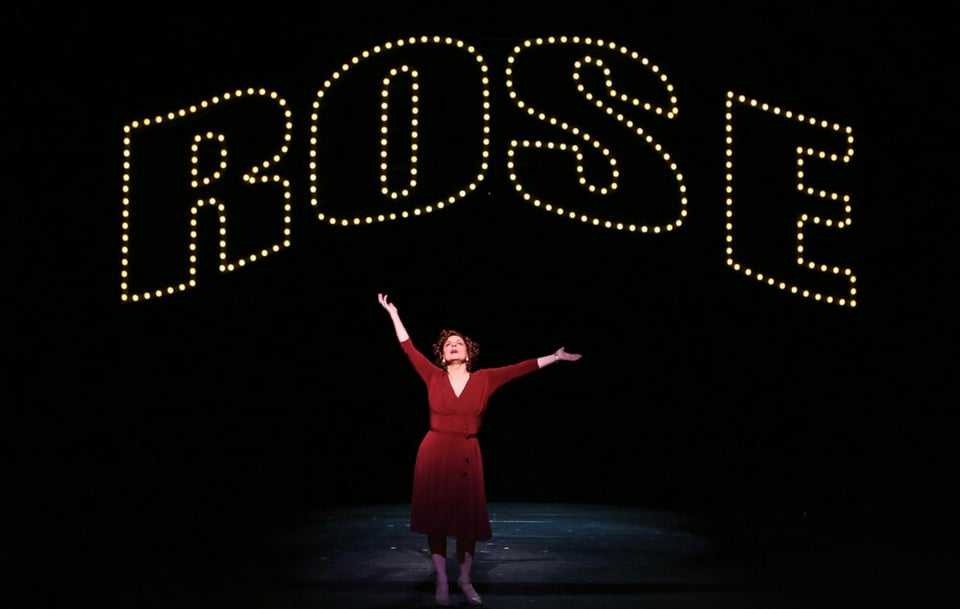
Patti LuPone’s Rose had “a sense of roiling, ravenous demonwithin.”Credit...Sara Krulwich/The New York Times.
New Yorkers are still feeling the burn of LuPone’s scorcher of an interpretation, which combined the steamroller indomitability of Merman with a sense of roiling, desperate demons within. At moments, I wrote at the time, “the darkness takes over so completely that you feel that you’re watching a woman who has been peeled down to her unadorned id.” I had a lukewarm response to an earlier incarnation of Rose by LuPone and wrote in my review of her Broadway performance, “That quiet crunching sound you hear is me eating my hat.” LuPone responded as Rose might have. She sent me a milliner’s box; inside was a giant chocolate cowboy hat.
2015
Imelda Staunton
Jonathan Kent’s London production brought a documentary sensibility to its depiction of a poverty-ridden America, and Staunton’s Rose was a life-size photo-realist portrait, stunningly embroidered with period-perfect details. Small, scrappy and as tough as old boot leather, this Rose showed how hunger in hard times can turn a person toxic or even — let’s not mince words — sociopathic. “What she does,” I wrote in my review, “is divest Rose of the great-lady, great-gesture musical-comedy mystique that has clung to her through the decades.”
At the time, I thought that would probably be the last word on Rose for a while. But only eight years later, I let out a whoop of delight when I heard that McDonald, arguably the greatest Broadway musical star of her generation, would be playing the part.
From what I saw in that first preview, McDonald’s Rose is going to be as different from all of her predecessors as they are from one another — and not, primarily, because she’s the first Black actress to play the role on Broadway. In any case, you’ll undoubtedly find yourself rethinking Rose all over again when the show officially opens on Dec. 19.
“Rose is the classroom example of self-delusion, a showbiz Oedipus,” Sondheim wrote. We’ve been rediscovering Oedipus for more than 2,000 years. I’d say the determined, deluded and, yes, tragic Rose has a good chance of being reborn, again and again, in dazzlingly varied forms for as long as theater exists.
Ben Brantley was the chief theater critic of The Times for more than 20 years. New York Times.